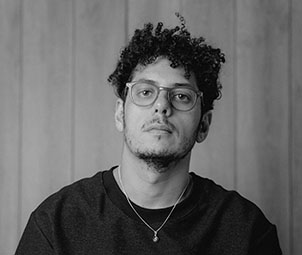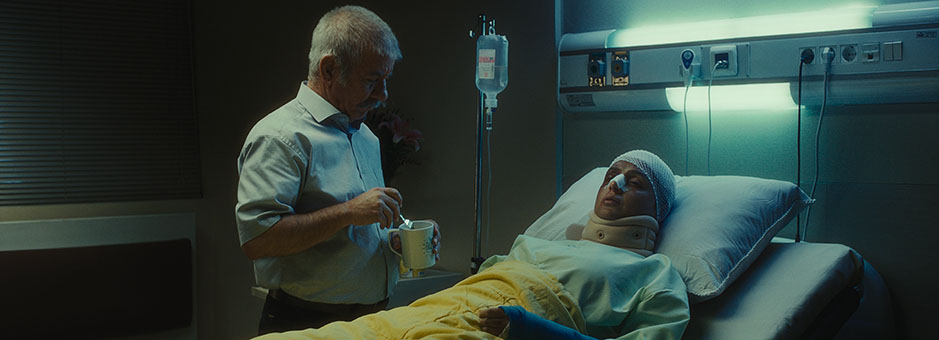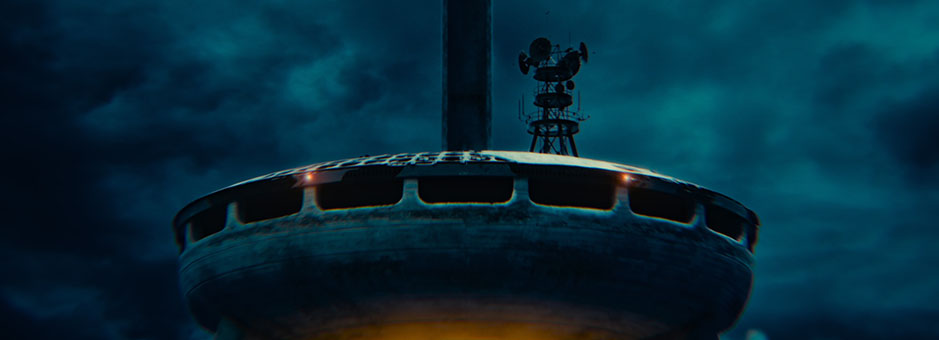Meet The Colourist
Fady Melek
Senior Colourist, Katara Studios, Qatar
Fady Melek is a senior colourist with over 20 years of experience in the film industry. Having studied Art and Chemistry at University, Melek took a transformative leap to the film industry in 2009. He quickly became a senior colourist with an impressive portfolio featuring over 30 feature film credits.
After leaving Egypt in 2011, Melek joined Technicolor, where he worked on blockbuster movies like Taken and Transporter. In 2017, Melek joined Katara Studios in Qatar as a senior colourist, where he still works on grading feature films and TV shows, as well as managing intricate workflows for demanding VFX projects.
Fady Melek was recently recognised with a 2024 Global Recognition Award for his extraordinary contributions to the filmmaking industry. Katara Studios was also awarded three Gold Telly Awards this year, for projects graded by Melek on Baselight 6.0: the HADAF music video clip – the official music video clip for the Asian Cup in Qatar; the film Kalilah and The Lost Chapter of Kelileh & Demneh; and the Medinah TV show.
Can you tell us about your journey to becoming a colourist?
My journey started when I was working in the scanning and printing field, during the days of digital intermediate (DI). It was here that colour grading introduced itself to me and I immediately fell in love because it combined two of my favourite things: painting and technical knowledge.
Shortly after this I became an assistant colourist and then worked my way up the ladder to where I am today – senior colourist at Katara Studios.
I went to university to study chemistry and in my third year I got the chance to work in a film lab in Egypt. We would receive films to be scanned and printed and I was immediately drawn to the art of cinema. When you work in a lab you understand the power of printer lights and how you can completely transform the feeling of an image and the impact on the viewer with just one tool. When I moved to grading, I used the same approach – by not building a look based on masking and keying but more of a homogenous global effect on the image. This is how my experience influenced my colour grading.
Tell us about your role and work at Katara Studios?
Working at Katara Studios, as senior colourist and head of picture, I get to grade and conduct look development for almost all the content produced by the studio – from feature films, TV shows and music videos, to documentaries and commercials.
I also take care of the technical aspect of the image – designing a pipeline for VFX and onset viewing for SDR and HDR. It has been a remarkable period for me; not only to be working at such a high level technically, but to also be surrounded by like-minded professionals. It is inspiring!
At Katara Studios we are exposed to all formats. One day I am working on a feature film and the next day I am grading a music video clip for the World Cup. The credit for managing these different projects goes to the post-production team at Katara Studios, as together they have designed a system and pipeline which makes us very effective in handling a variety of projects at the same time.
I enjoy it all, but after all is said and done, I am still a film guy to the core.
How would you describe your grading style?
This is a hard question to answer. I prefer not to have a specific style and instead focus on what the piece needs. However, I do pay a lot of attention to skin tones and how they are rendered – this is what I use as a reference for balancing and look development.
Tell us more about how you work with skin tones?
Manipulating skin tones to make them more pleasing to the eye is a delicate and extremely important task. Ultimately, the viewer focuses largely on this part of the image, and a significant part of the story's emotions can be conveyed through the characters’ skin tones.
Chromogen is now my go-to tool for adjusting skin tones in this scenario. Colour cross talk and bleaching skin tones separately from the overall image is a powerful technique.
The industry in the Middle East has existed for a very long time. It has always been a rich environment for drama stories and mythological characters. I think there is so much opportunity in the Middle East, with so much history and story that has not been touched upon. The only challenge I see is the slow development of a system that protects artists and filmmakers. My hope is that this will evolve and nourish with the right leadership that has a collective vision for harnessing the talent and the art – so that they can enhance and share it with the world.
The answer is simple – a solid workflow and reliable tools.
Firstly, Baselight gives you the flexibility to work as you wish. However, for me, the innovation in the tools is like nothing else. When FilmLight releases a new tool in Baselight you can be sure it will not let you down or break the image in the middle of a project.
Have you explored Baselight 6.0? If so, what are your thoughts?
Baselight 6.0 with the new addition of so many tools like X Grade, Chromogen, and all the spatial tools, have made grading faster and more fun. With these new tools, the sky's the limit for what the image can become.
I always like to dedicate some time to talk to the DoP and production team to come up with a look for the project that will serve as the show LUT – usually scene-referred under a specific DRT.
After that, my grading becomes a harmony of massaging the footage of the piece to fit well and to also be homogenous with the look created, so in the end the grading serves the overall intentions of the cinematography.
The software tools and the dynamic range of the images we have now are way superior to those in the days of DI (digital intermediate). I believe the role of the colourist has expanded, and their involvement has become crucial in every project.
A big part of the look in the past was fixed in the negative with the film print, but now the camera data serves as a blank canvas for cinematographers and colourists to collaboratively create a unique piece for every project.
90 percent of the time I work using a scene-referred pipeline. In my opinion, working with that T-CAM DRT in Baselight is the most reliable and accurate way to render between different display standards because the look aspect is separated from the display rendering and does not limit you to any looks for the project.
Working with HDR has evolved a lot in the last couple of years. HDR is simply a bigger canvas to work with, but I am always very careful with the highlights roll-off. At the end of the day, our goal is to pull the viewer in, and if the highlights in HDR are not done well, it can have the opposite effect.
The Pact is a project that was executed in the studio from pre-production through to final delivery, so I was part of the team from day one.
This allowed me to take part in the early discussions surrounding the look and feel of the show. The cinematographer, Steven Whitehead, and the producer/director, Ahmed Al Baker, both had a clear idea of what they wanted the visuals to say, so I conducted different approaches and styles for the show and we settled on one we felt that gave us the harsh, cold and gritty feel we wanted from a post-apocalyptic show.
One of the key challenges was the amount of VFX in the show. We designed a strong workflow with the VFX company AUTOMATIK to automate all the plate pulling, and the LUT creation made this turnaround very fast and seamless.
What are you working on now/next?
Right now, I am working on a feature film titled “سعّود وينه ”(‘Where is Saood') which is one of seven projects recently greenlit by Katara Studios – including feature films and TV series.
Join In
If you want to participate in our MTC programme, we'd love to hear from you. Contact:
Alexa Maza
e: [email protected]

“A big part of the look in the past was fixed in the negative with the film print, but now the camera data serves as a blank canvas for cinematographers and colourists to collaboratively create a unique piece for every project.”
Details
Colourist: Fady Melek
Role: Senior Colourist, Katara Studios
Web: Katara Studios








